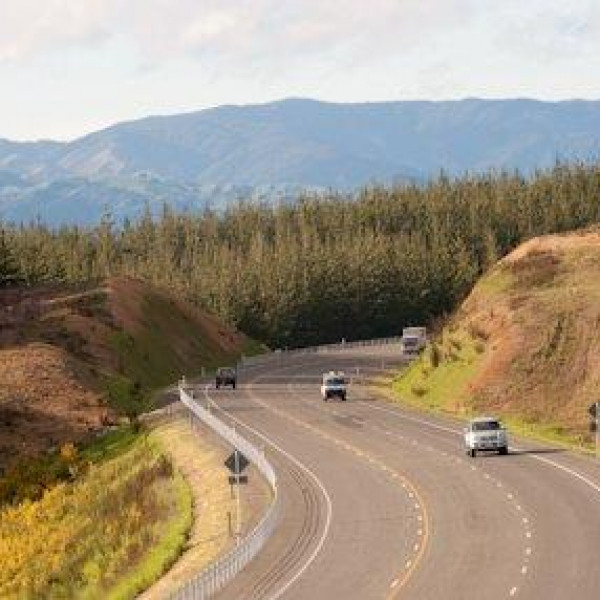
We are investigating how to make travel in the Tasman region safer, more efficient and more resilient and have undertaken strategic cases for three projects: SH6 Richmond Arterial, SH60 Richmond to Collingwood, SH60 Motueka township.
For information on the work to repair damage from Cyclone Gita on State Highway 60, Takaka Hill, please visit the project page: www.nzta.govt.nz/takaka-hill
By investigating opportunities to improve the transport network, our aim is to help the people who live and work in the area as well as others who rely on the network for business or travel purposes. This includes freight and tourism.
In 2015-17 investigations looked at existing problems and potential benefits of addressing two sections of the highway network in Tasman. These include the urban section of State Highway 6 through Richmond, the full length of State Highway 60 from Richmond to Collingwood and a more detailed investigation of the urban section of State Highway 60 through Motueka township.
The strategic case is part of the Transport Agency’s business case approach. During this phase, we seek to understand problems on the network and their significance, the outcomes we want and the benefits that we could achieve from resolving the identified problems.
Read the completed strategic cases for Richmond Arterial and Motueka township.
Traffic volumes in Richmond have increased as a result of new commercial development on Gladstone Road and side streets. This is causing increased congestion, especially at peak times. With Richmond’s population predicted to increase, the transport network needs to be planned and managed accordingly.
The Transport Agency has determined that the next step is to develop a Network Operating Framework in conjunction with Tasman District Council and Nelson City Council. This could highlight the need for a number of options for the road, including possible short-term optimisation options.
The Network Operating Framework will also help determine what is to be done regarding the Hope Bypass designations which will lapse in 2023. This process will guide the direction to take – whether the designations are left to lapse or to consider another option.
A number of workshops will be held with key stakeholders to develop a Network Operating Framework for Richmond. This will combine the operational needs to the network with future planning across the Richmond district in time to inform the development of the 2021-2024 Regional Land Transport Plan.
Some specific transport issues in Motueka have been identified during our investigations. During workshops for the strategic case, we confirmed that the design of the pedestrian crossings is leading to crashes and a number of intersections could be redesigned to work more effectively.
The detailed business case is largely complete. It investigated how to address the pedestrian crossing issues and considered the redesign of a number of intersections along High Street.
Funding to progress to implementation did not rank highly enough in the national context in the 2018-2021 National Land Transport Plan (NLTP). This funding outcome was formally communicated to the Council at its Regional Transport Committee meeting on 17 September 2018.
On 15 April 2019 the NZ Transport Agency (NZTA) presented the Draft Option for State Highway 60 (SH60) valued at $7 million through Motueka to the Tasman Regional Transport Committee, so that the work done to date was not lost and able to be efficiently picked back up – should funding priorities or opportunities change, and to allow the Transport Agency to complete the business case with a share understanding of Council’s views.
From a safety perspective, the highest priority element of the Motueka Town Centre Investigation was the intersections of High Street and King Edward Street with SH^). Investigation and design of safety improvements via the Low Cost Low Risk Programme commences in 2018/19 but has since ceased as it has become apparent the cost will exceed $1 million.
Interventions to improve the State Highway efficiency and improve access and pedestrian safety at other locations identified within the business case have not currently been included in the Low Cost Low Risk Programme. However, some minor maintenance changes to the colour of the zebra crossings to improve conspicuousness are being investigated. This was due to other high priority locations within Tasman taking precedence, such as the high speed high risk sections of SH60 between Three Brothers Corner and Motueka.